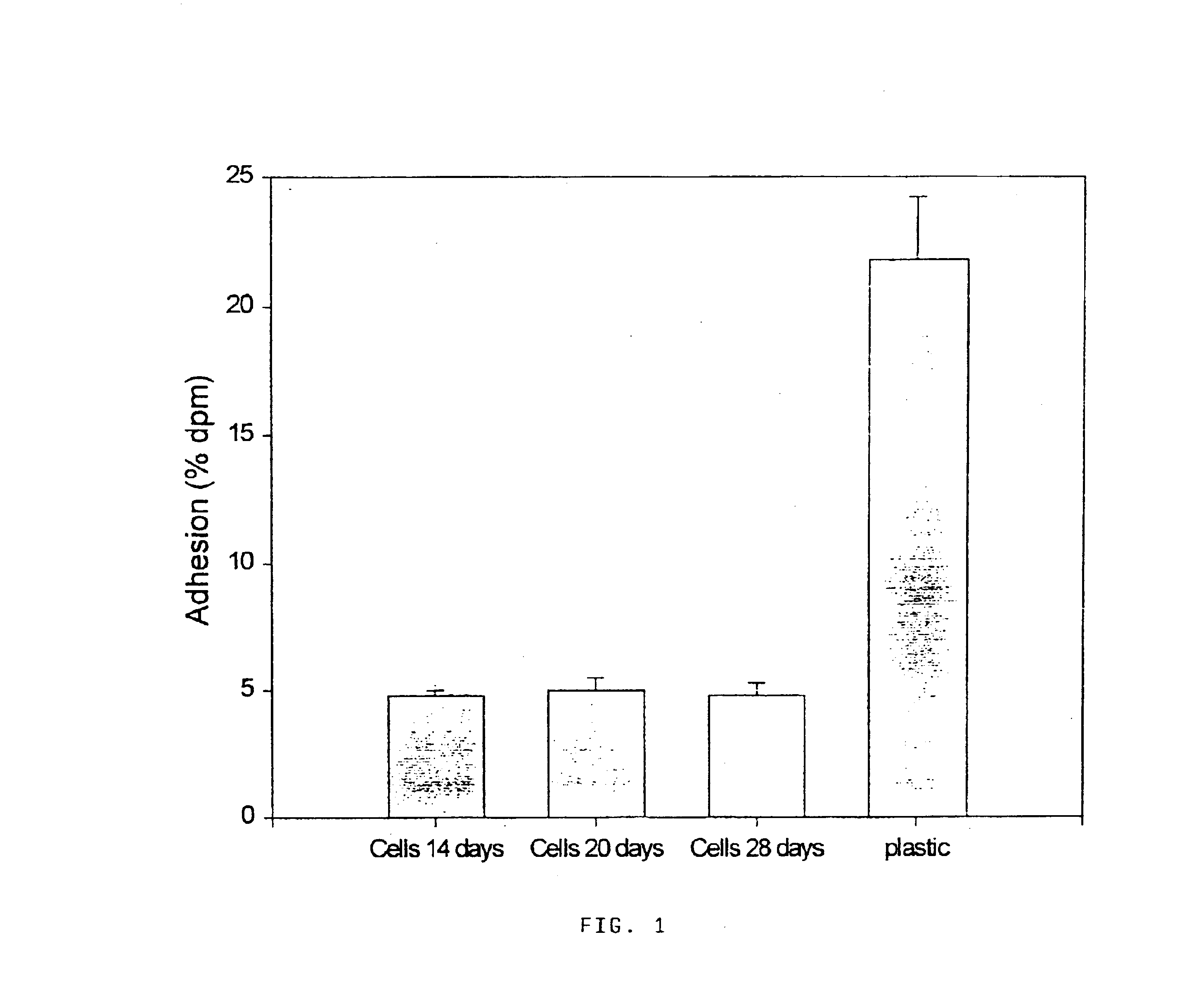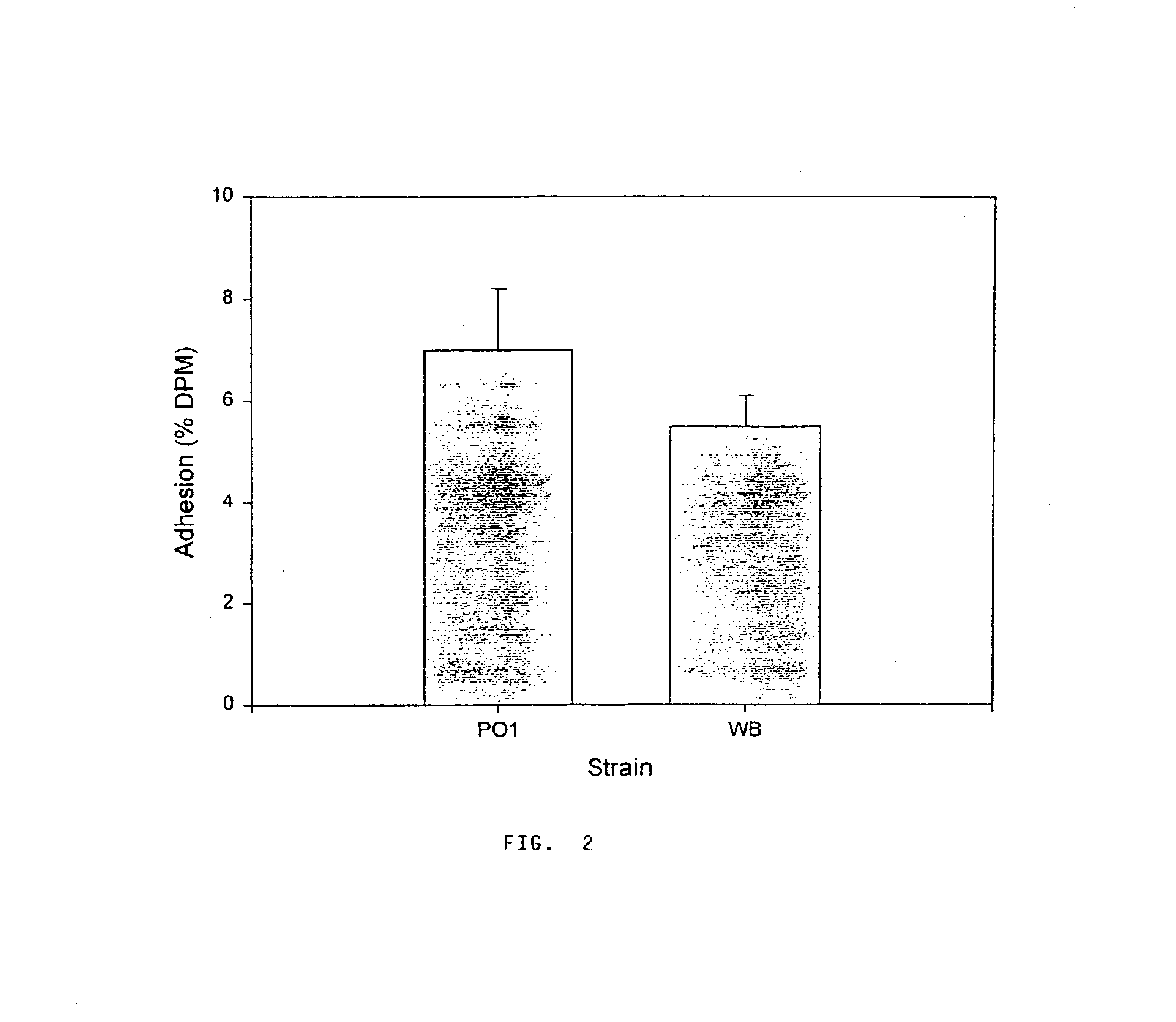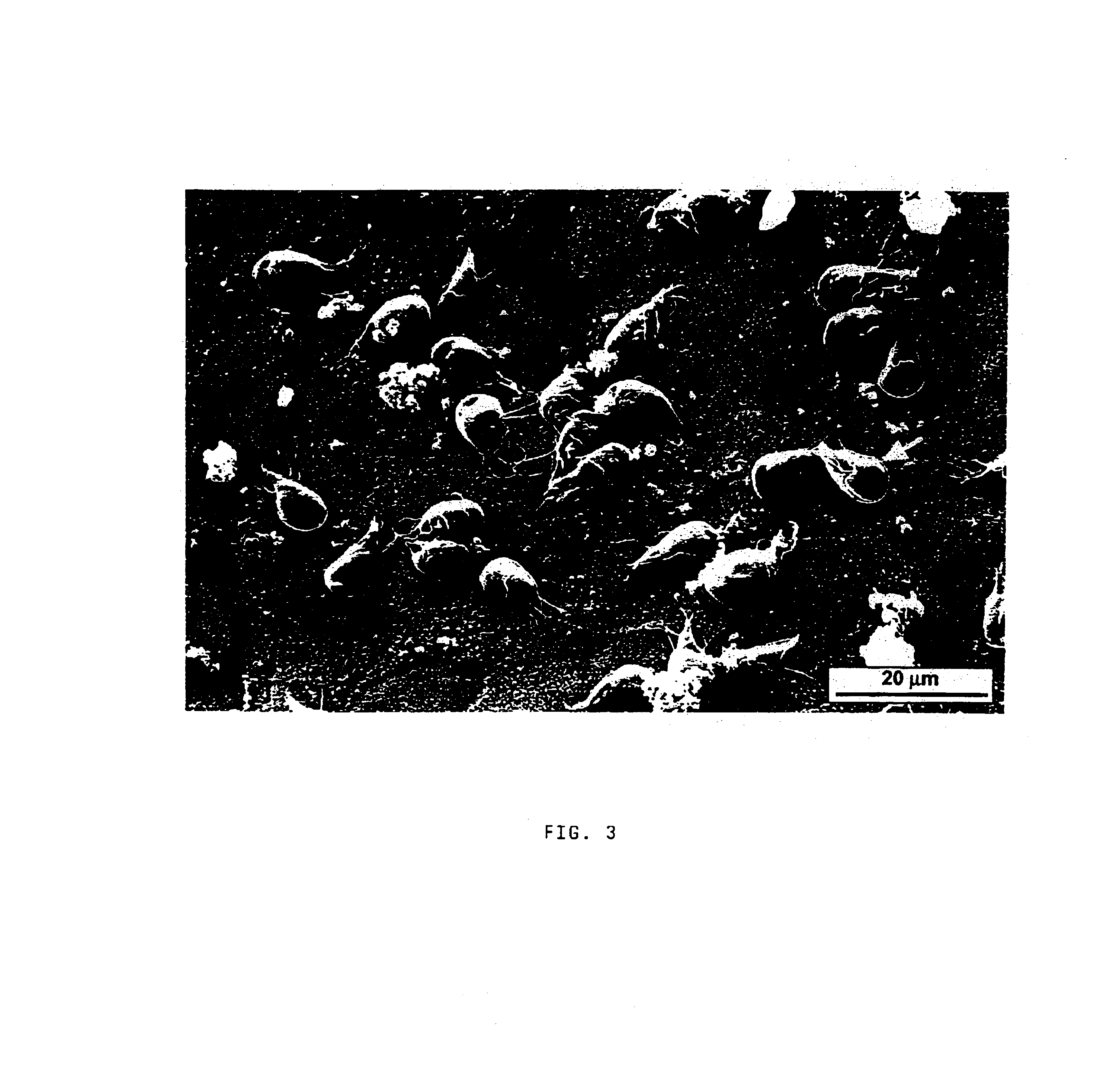Lactic acid bacteria for the treatment and/or prophylaxis of giardiasis
a technology giardiasis, which is applied in the field of lactic acid bacteria for the treatment and/or prophylaxis of giardiasis, can solve the problems of difficult or nearly impossible for the host's immune system to develop a specific response against the pathogen, death of newborns, and impaired growth and development of children, and achieves the effect of convenient manufacturing
- Summary
- Abstract
- Description
- Claims
- Application Information
AI Technical Summary
Benefits of technology
Problems solved by technology
Method used
Image
Examples
example 1
Radiolabelling of Trophozoites
[0049]Parasites were inoculated in TYI-S-33 and 2.6 to 7.1 μCi / ml of either 2-3H adenine (21 Ci / mmol, 1 mCi / ml, Amersham Life Science) or methyl-3H thymidine (2 Ci / mmol, 1 mCi / ml, Amersham Life Science) were added. Incubations were performed at 37° C. for 48-72 hrs.
[0050]Growth of trophozoites with 7.1 μCi / ml of either 3H-adenine or 3H-thymidine gave very different DPM / parasite ratios (Table 1). Although thymidine concentration was 10-fold higher as compared to that of adenine, incorporation was very low with the result that 0.08 and 2.8 DPM / parasite were obtained, respectively.
[0051]
TABLE 1Incorporation of 3H by Giardia strain Portland-1adding 7 μCi / ml of radiolabeled basesRadiolabeledsubstancemmols / mlDPM / parasite2-3H adenine 3 × 10−7 2.8 ± 0.10Methyl-3H35 × 10−70.08 ± 0.00thymidine
[0052]Table 2 shows the results of the adenine incorporation by Giardia intestinalis strains. Suitable radiolabelling was obtained by using adenine concentrations as low as ...
example 2
Cell Cultivation
[0054]Caco-2 cells were grown in DMEM supplemented with non essential amino acids, penicillin (12 IU / ml), streptomycin (12 μg / ml), gentamicine (47 μg / ml) and inactivated fetal calf serum (20% v / v). Monolayers were prepared in 6-well tissue culture plates by seeding 2×105 cells per well. Incubations were performed at 37° C. in a 10% CO2 / 90% air atmosphere. The culture medium was changed each 2nd day. Adhesion assays were performed with cells between passages 49 and 51 and only monolayers in late postconfluence stage were used (at least two weeks in culture).
[0055]Undifferentiated HT-29 cells (American Type Culture Collection, Rockville, Md.) were grown in DMEM containing 4.5 g / l glucosa (Seromed, Biochrom KG, Berlin, Germany) supplemented with Glutamax 1 (0.01% v / v; L-alanyl-Lglutamine 200 mM, GIBCO, Basel, Switzerland), gentamycin (0.57 mg / ml, GIBCO, Basel, Switzerland) and fetal calf serum (10% v / v, GIBCO, Basel, Switzerland). Cells were used at passage 52.
example 3
Adhesion Assays
[0056]When confluent monolayers of trophozoites were obtained, the culture medium was discarded, thus eliminating any parasites not attached to a surface. Attached parasites were harvested as described and washed 3 times with DMEM (Gibco) containing 11.4 mM cysteine HCl. Dilutions (1:2) of parasites in paraformaldehyde 1% were enumerated in an hemocytometer.
[0057]Radiolabelled trophozoites suspended in DMEM-CYS (DM EM+11.4 mM cysteine HCl) were added to monolayers of Caco-2 cells and incubated for 1 h at 37° C. in a 5% CO2 / 95% air atmosphere. Monolayers were then washed 3 times with DMEM-CYS at 37° C. to detach unbound trophozoites.
[0058]After washing 1 ml of 1 N NaOH was added per well and the plates were incubated during 1 hr at room temperature. Cell lysates were placed in scintillation vials and a further wash of the wells with PBS was performed. Radioactivity was measured with a β-counter (RackBeta Spectral, LKB, Wallac).
PUM
| Property | Measurement | Unit |
|---|---|---|
| size | aaaaa | aaaaa |
| pH | aaaaa | aaaaa |
| pH | aaaaa | aaaaa |
Abstract
Description
Claims
Application Information
 Login to View More
Login to View More - R&D
- Intellectual Property
- Life Sciences
- Materials
- Tech Scout
- Unparalleled Data Quality
- Higher Quality Content
- 60% Fewer Hallucinations
Browse by: Latest US Patents, China's latest patents, Technical Efficacy Thesaurus, Application Domain, Technology Topic, Popular Technical Reports.
© 2025 PatSnap. All rights reserved.Legal|Privacy policy|Modern Slavery Act Transparency Statement|Sitemap|About US| Contact US: help@patsnap.com



